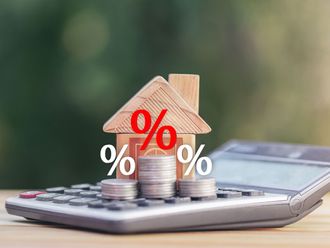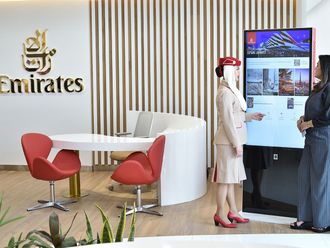Dubai: Islamic banks in the GCC are expected to face a tough year ahead as the slowdown in asset growth is likely to persist this year, according to global rating agency Standard & Poor’s.
Islamic banks’ asset growth declined to 5.3 per cent in 2016 from 10.7 per cent in 2014. “In our base-case scenario, we assume that asset growth will stabilise at about 5 per cent as governments’ spending cuts and revenue-boosting initiatives, such as new taxes, reduce Islamic banks’ growth opportunities in the corporate and retail sectors. We see banks becoming more cautious and selective in their lending activities, triggering stiffer competition,” said Dr Mohammad Damak, Head of Islamic Finance, S&P Global Ratings.
The impact of the slowdown will vary across markets. Although the economic slowdown will likely remain pronounced in Saudi Arabia, Islamic banks’ growth accelerated there in 2016, thanks to their strategy of increasing business among corporates and small and midsize enterprises (SMEs).
Asset growth was about flat in Kuwait over the past year, hit by the depreciation of certain foreign currencies and the ensuing impact on the financials of some leading Kuwaiti Islamic banks. Despite a slowdown in economic growth in the UAE and the drop in real estate prices, Islamic banks continued to expand by high single digits.
“As the economic cycle turns, we think GCC Islamic banks’ asset quality indicators will deteriorate in the second half of this year and in 2018. Such weakening was not noticeable in 2016 because — as is typical — banks had started to restructure their exposures to adapt to the shift in the economic environment,” said Damak.
Although there has been an increase in restructured loans across the GCC last year, increase in nonperforming loans (NPLs) were relatively low. Analysts expect the deterioration in asset quality will be more visible in the second half of 2017 and 2018.
While subcontractors, SMEs, and expatriate retail exposures will bear the brunt of the turning economic cycle and contribute prominently to the formation of new NPLs, GCC Islamic banks’ profitability is expected to deteriorate again in 2017 and 2018.
Overall, the profitability is likely to be negatively impacted by the rising cost of funding, and squeeze on banks’ intermediation margins.
“Although the pressure eased a bit after some governments issued international bonds and unlocked payments to contractors, we think the cost of funding will remain inflated in 2017-2018,” said Damak.
The US Federal Reserve (Fed)’s recent rate hike, which some GCC central banks have emulated, could result in deposits shifting to profit-sharing investment accounts (PSIAs) from unremunerated current accounts. If this happens, it would raise the cost of funding even further.
Very few Islamic banks have set aside significant amounts of profit-equalisation reserves, which they build in good years and use to smooth returns to PSIA holders if needed.
Like their conventional counterparts, GCC Islamic banks, through their relatively low cost bases, should be able to protect their profitability somewhat over the next two years, however. Although consolidation might be a way forward in some GCC markets, mergers are likely to remain an exception in 2017-2018 rather than the norm.
Capitalisation is generally a positive factor for GCC Islamic banks. However, there has been gradual weakening of capital levels because of previous rapid financing growth was not matched by additional capital raising. Few GCC banks have issued capital-boosting sukuk and those that have, are primarily in the UAE, Qatar, and Saudi Arabia.












